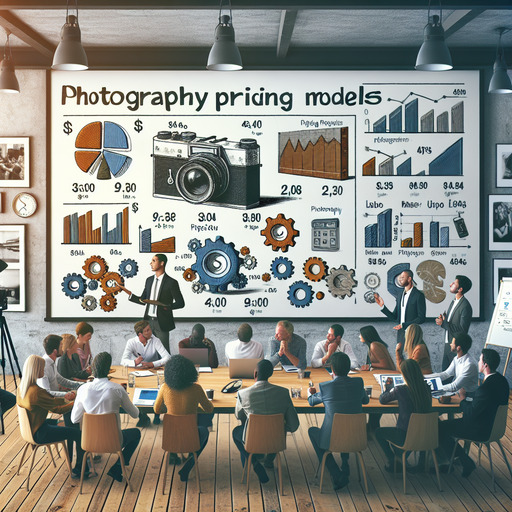
-
Table of Contents
Discover the best photography pricing model for your business! Learn more now! Click here to find out.
Introduction
Photography Pricing Models: Which One Works Best?
In the dynamic world of photography, determining the right pricing model is crucial for both photographers and clients. Various pricing strategies exist, each with its own set of advantages and challenges. From hourly rates and package deals to licensing fees and subscription models, photographers must carefully consider their business goals, target market, and the nature of their work to select the most effective approach. This introduction explores the different photography pricing models, providing insights into their suitability for various types of photography services and helping professionals make informed decisions to optimize their revenue and client satisfaction.
Photography Pricing Models: Which One Works Best?
When it comes to determining the best pricing model for photography services, the decision can be quite complex. Various factors such as the type of photography, the target market, and the photographer’s level of experience all play crucial roles. Understanding the different pricing models available can help photographers make informed decisions that align with their business goals and client expectations.
One common pricing model is the hourly rate. This model is straightforward and easy to understand for both the photographer and the client. It involves charging a set fee for each hour of work, which can include shooting time, editing, and any other related tasks. The hourly rate model is particularly effective for event photography, where the duration of the event is known in advance. However, it may not be the best choice for projects that require extensive post-processing, as the time spent on editing can be unpredictable.
Another popular option is the package pricing model. This model involves offering clients a set of predefined packages that include a certain number of hours, prints, or digital files. Package pricing is advantageous because it provides clients with clear options and helps manage their expectations. It also allows photographers to upsell additional services or products, such as albums or extra prints. However, the challenge lies in creating packages that are both appealing to clients and profitable for the photographer.
The value-based pricing model is another approach that focuses on the perceived value of the photographer’s work rather than the time spent on the project. This model is particularly effective for high-end or specialized photography services, such as commercial or fine art photography. By emphasizing the unique qualities and expertise that the photographer brings to the table, value-based pricing can command higher fees. However, it requires a deep understanding of the market and the ability to effectively communicate the value of the services offered.
In addition to these models, some photographers opt for a retainer-based pricing model. This involves clients paying a monthly or annual fee to retain the photographer’s services for a set period. This model provides a steady income stream and can be particularly beneficial for photographers who work with corporate clients or on long-term projects. However, it requires a strong relationship with the client and a clear understanding of their ongoing needs.
Transitioning from one pricing model to another can be challenging, but it is sometimes necessary as a photographer’s business evolves. For instance, a photographer who starts with hourly rates may find that package pricing becomes more suitable as their client base grows. Similarly, a photographer who initially uses package pricing may transition to value-based pricing as they gain more experience and recognition in their field.
Ultimately, the best pricing model for a photographer depends on their specific circumstances and goals. It is essential to regularly review and adjust pricing strategies to ensure they remain competitive and aligned with the market. By carefully considering the advantages and disadvantages of each model, photographers can choose the approach that best meets their needs and helps them achieve long-term success.
Q&A
1. **What are the different photography pricing models and which one works best?**
– **Hourly Rate**: Charges based on the number of hours worked. Best for events where the duration is uncertain.
– **Package Pricing**: Offers a set of services for a fixed price. Ideal for weddings and portraits where clients prefer knowing the total cost upfront.
– **Per Image Pricing**: Charges based on the number of images delivered. Suitable for commercial and stock photography.
– **Subscription Model**: Clients pay a recurring fee for ongoing photography services. Works well for businesses needing regular content.
– **Value-Based Pricing**: Prices are set based on the perceived value to the client. Effective for high-end, bespoke photography services.
**Which one works best?** It depends on the type of photography and client needs. For events, hourly rates or package pricing are often best. For commercial work, per image pricing or value-based pricing can be more effective. Subscription models are ideal for clients needing consistent, ongoing services.